Growing remontant strawberries according to all the rules
Many gardeners are involved in the cultivation of strawberries. Recently, remontant strawberries have become increasingly popular. It has quite a few distinctive features compared to conventional varieties, and therefore has additional requirements for its care. This strawberry can be grown both outdoors and at home (in a greenhouse, bags, flower pots). In this article, we will look at the features of growing, planting and care.
Content
Landing features
The main distinguishing feature of all remontant strawberry varieties is that they are capable of producing several harvests in one growing season (subject to proper care).
The quality and volume of the crop depends on how correctly the remontant strawberry was grown. The whole process should start with choosing the right variety for growing. Since the selection of a variety is carried out empirically, i.e. by tasting berries, experienced gardeners recommend growing several varieties at once, so that later you can choose the ones you like most. For example, among the remontant varieties, the most positive reviews are strawberries Queen Elizabeth, Mount Everest, Albion and many others. But remember that the purity of the variety is maintained only when the seedlings have been grown from seed (suitable for mustardless remontant strawberries).

Planting remontant strawberries consists of several stages:
- growing seedlings from seeds (antennae can be used);
- planting seedlings in the garden.
Growing seedlings
It is best to plant strawberries in the ground where the vegetable crop used to grow. In this case, soil moisture should be about 70-80%. To achieve this, you need to add 750 ml of water to 1 kg of dry substrate, then carefully move everything, avoiding the formation of lumps. Seedlings are planted in a container of dense material, the diameter of which should be about 10 or 15 cm. This container must be filled with previously prepared soil. Leave about 3 cm of free space on top. After that, the seeds of the plant should be scattered on top and lightly sprinkled with earth (it must be dry). Then spray the ground with water using a spray bottle.

In order to grow remontant strawberries, certain conditions must be observed that are as close to natural as possible. In nature, seeds must be exposed to sunlight in order to grow. If the seeds are open to sunshine, then they will sprout many. Moreover, this condition is suitable not only for growing remontant strawberries, but also for ordinary varieties.
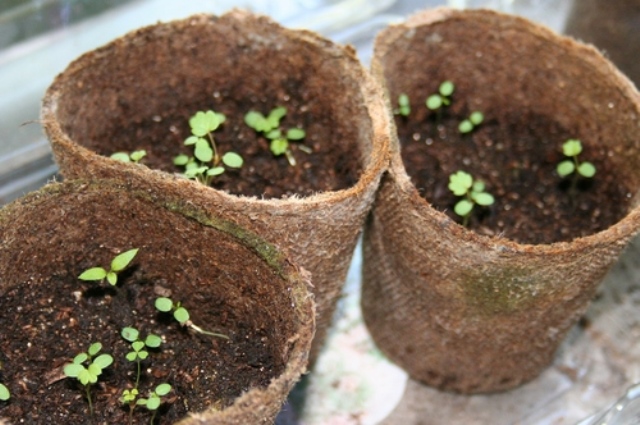
After the seeds of the remontant varieties have been planted, the container must be covered with plastic transparent film, and then put in a warm place. After three weeks, the first shoots will begin to appear in it. They need to be watered periodically.
Planting seedlings in the garden
The place of future growth of strawberry bushes should be protected from the winds and well lit.
Strawberry seedlings should be planted in early May. Before this, the beds must first be cleared of germinated weeds. You should also loosen the soil and add compost. The most suitable soils for planting remontant plants are fertile medium loamy soils, which are closest to neutral in composition.
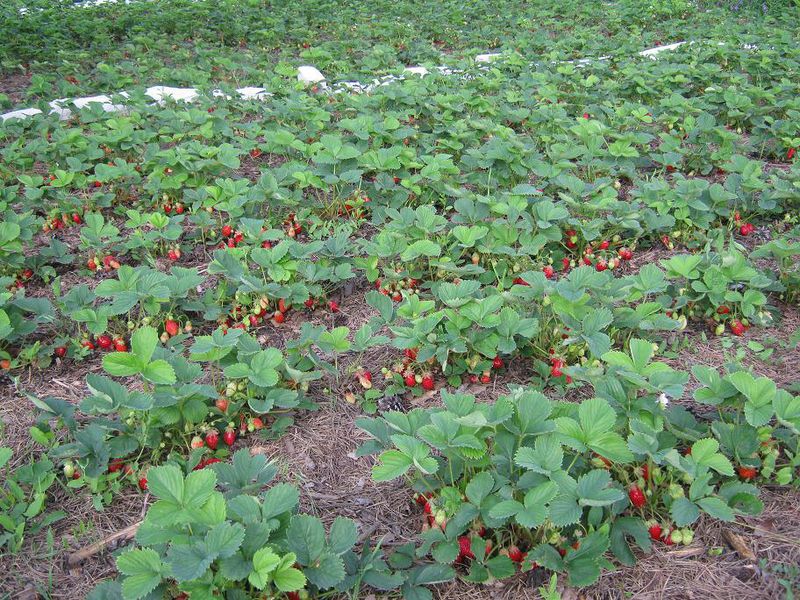
On the prepared bed, you need to dig a hole and pour water over it. Seedlings of large-fruited remontant strawberries (as well as small-fruited ones) are carefully removed from the container where they had grown before, and planted with a lump of earth in this hole. Before planting, the root system can be sprinkled with a preparation of the "Kornevin" type. Then you should compact the soil around each seedling planted.
There are the following rules for proper planting for the effective cultivation of remontant strawberries:
- planting of seedlings is carried out in May, although planting in the fall is possible for remontant varieties;
- the landing site must be completely cleared of weeds;
- a month before planting seedlings in the ground, you need to add 5 kg / m2 humus or compost;
- before the direct planting of seedlings, the soil is fertilized with superphosphate, potassium salt and ammonium nitrate;
- it is not recommended to plant seedlings deeply (the "heart" should be on the surface);
- the distance between plants should be about 70 cm between rows and 40 cm between strawberries;
- you need to land only during the cool part of the day (rainy weather will be optimal);
- watering the wells is carried out with a small amount of water;
- the use of growth preparations for the root system of the plant is recommended;
- after planting the seedling, the ground should be tamped as tightly as possible (so that there are no voids under it).

Large-fruited remontant strawberries are often propagated with the help of whiskers (small-fruited varieties, most often, propagate by seeds) and, to a lesser extent, with the help of divisions of the bush. Propagation of strawberries with antennae is considered the easiest. For planting, choose only those sockets that are most developed. In order to preserve the necessary qualities of the variety, only the mustache of the first generation should be used for planting. They are dug up and planted in the right place. This method does not require large expenditures, as well as any additional knowledge.
Whichever method you choose to get an excellent harvest, you must follow all the rules of agricultural technology. It is the remontant varieties, due to the peculiarities of their physiology (high yield, which leads to the rapid depletion of the plant), are the most demanding in terms of planting and care conditions. In one place, strawberries can grow for about two to three seasons, and with proper care, up to five years.

How to care?
After you have planted a remontant strawberry, the plant must be properly cared for to maintain its properties.
Rules for caring for remontant varieties:
- to ensure proper air exchange, you need to regularly loosen the soil around the strawberry bushes;
- to prevent exposing the roots, you need to periodically add earth;
- the most important condition is periodic and abundant watering of the plant (you can use both a ladle and a watering can);
- during the flowering period, strawberry bushes must be fed with mineral fertilizers, which are designed specifically for strawberries, as well as infusion of bird droppings. Fertilizer mixtures used for feeding vegetables or flowers cannot be used;
- you also need to do regular weeding.
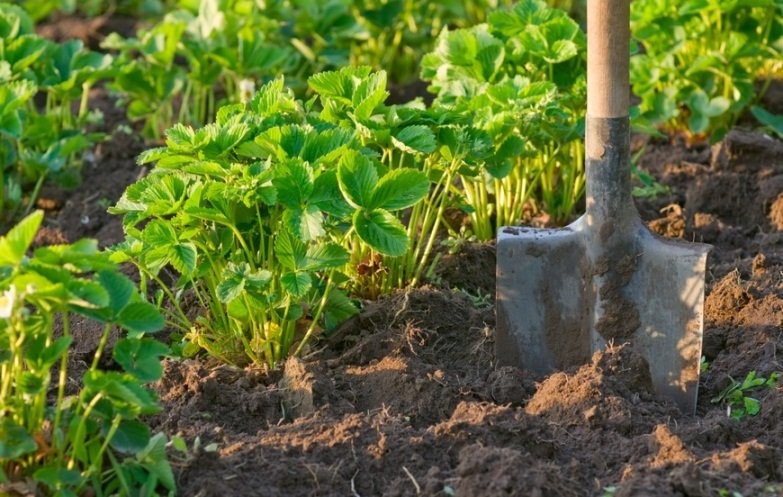
In addition, ring-shaped wire supports can be used in the case of berries lying on the ground. To obtain larger fruits, you need to constantly break off the antennae. This plant, at home, with proper care, is capable of producing 10-30% more crops than conventional varieties grown in a standard way.
How to prepare for wintering?
Like any other plant grown in the garden in the open field, remontant strawberries need to be prepared in a certain way for wintering. In order for the bushes to survive the winter normally, the following manipulations should be carried out:
- when planting in autumn, they break off at the mother bush of all mustache of the first order (they can be used to obtain seedlings at home or planted in the open field).Rooting of the first order mustache is also allowed;
- antennae are planted at a distance of no more than 20 cm from each other;
- after planting, the bushes need to be watered with a small amount of water;
- after the bushes have suffered the first frost, all leaves should be removed;
- after trimming all the leaves, cover the strawberry bushes with covering material.
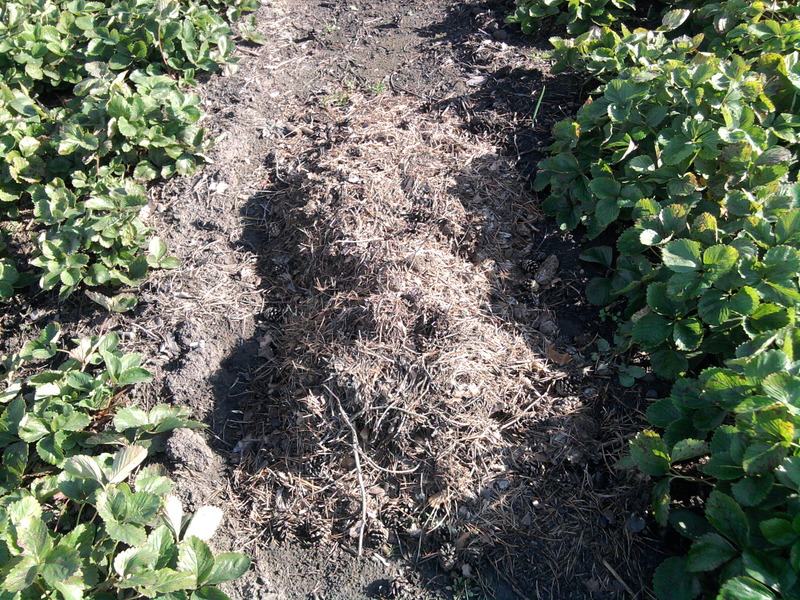
If you follow the above rules, you can save strawberries from winter frosts and get a plentiful, and most importantly, high-quality harvest already at the beginning of summer.
How to deal with pests?
One of the fundamental steps in caring for any remontant strawberry variety is considered to be the protection of the plant from various pests and diseases. As you know, even proper care is not always able to protect the plant from pathogenic microorganisms and insects. If various diseases lead to a weakening of the plant, as a result of which the taste of the crop is significantly reduced, and the fruits themselves become smaller, then insects spoil the already ripe excellent crop (which is especially regrettable). Therefore, gardeners are ready to do much to protect their crops and the bushes themselves from the negative effects of both insects and microorganisms.
Aphids are most commonly affected by strawberries. To combat these insects, a special solution is used, which is prepared as follows: a couple of heads of garlic are poured with three liters of cold water. This infusion should be infused for a week. After that, this solution can be sprayed on strawberry bushes with a spray bottle. This is the most effective and environmentally friendly way to control such pests.
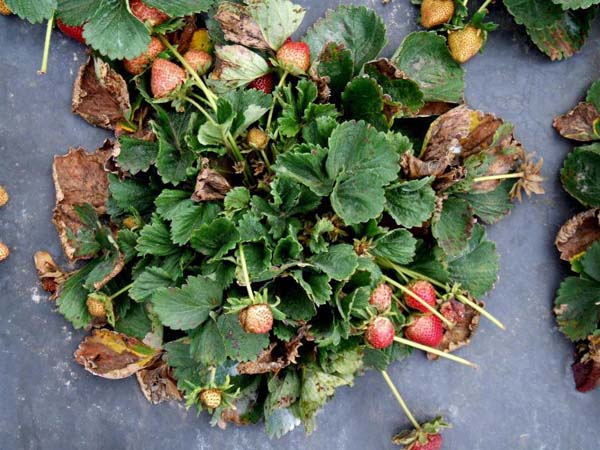
If the wasps have chosen the berries, jars can be placed around the beds in which sweet compote will be poured.
If birds began to eat your berries, then placing glass red balls near the bushes, which are readily used in the decoration of living quarters, would be an excellent solution to this problem. After unsuccessful attempts to peck such balls, birds will give up trying to eat strawberries.
In case of infection of plants with various pathogenic microorganisms or pests of a lower order, only specialized means should be used. But remember that sometimes powerful chemicals are used to treat bushes from various diseases, which can negatively affect the quality of the berries (the accumulation of toxic substances is possible in the fruits). Therefore, preventive treatment of plants should be carried out before the onset of the flowering period in order to avoid the negative effect of disinfecting solutions on the berries.
Measures to protect against diseases should not be neglected, because it is much easier to prevent the disease of strawberry bushes than to carry out treatment later.
In order to enjoy a delicious berry, you need to make enough effort not only to properly plant and grow the bushes, but also to provide proper care. It is the remontant strawberry varieties that need more painstaking care, which is due to their accelerated life cycle.
Video "Repair Strawberry"
In this video you can get acquainted with the peculiarities of growing and caring for small-fruited varieties of strawberries (strawberries).
